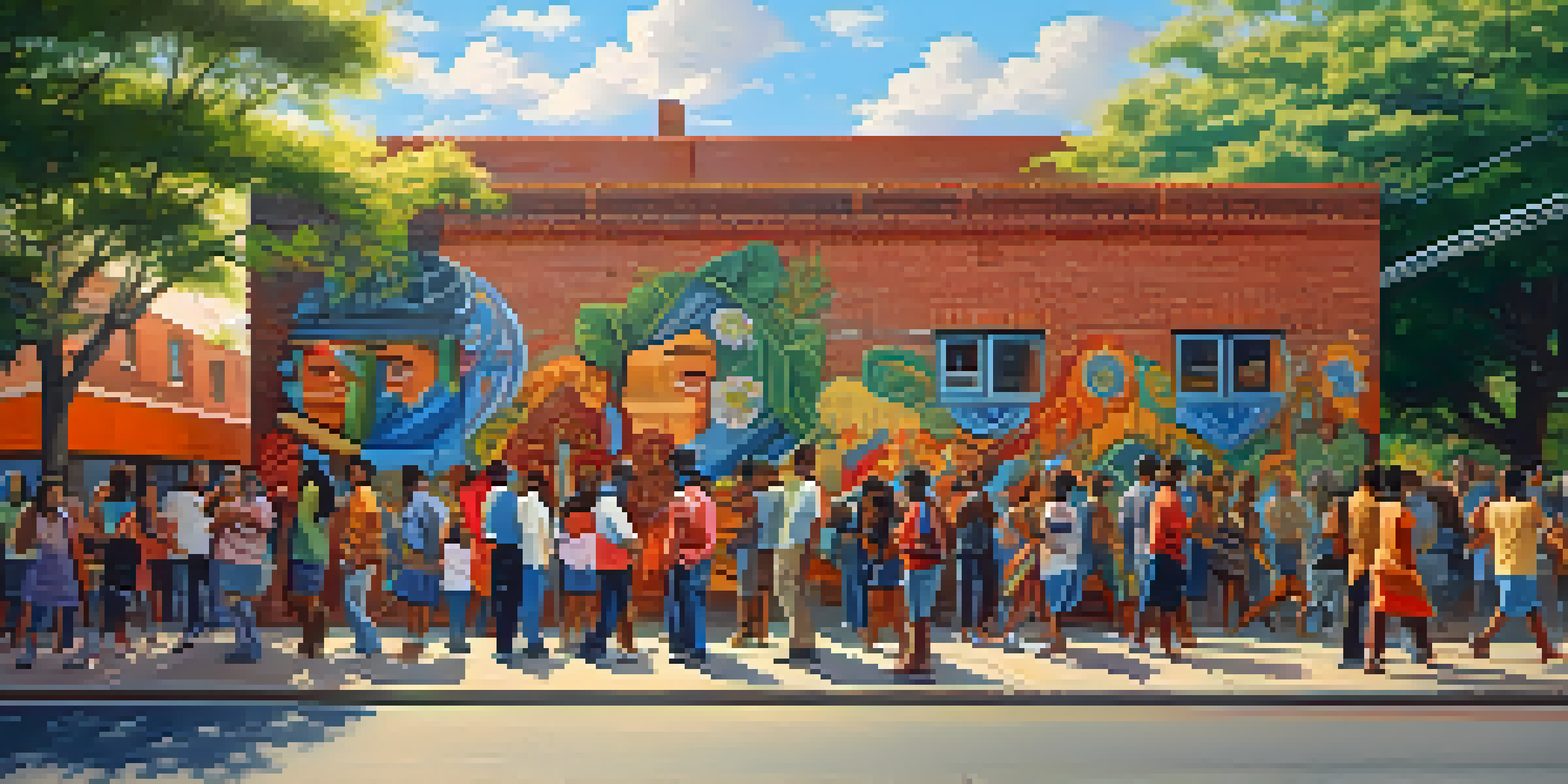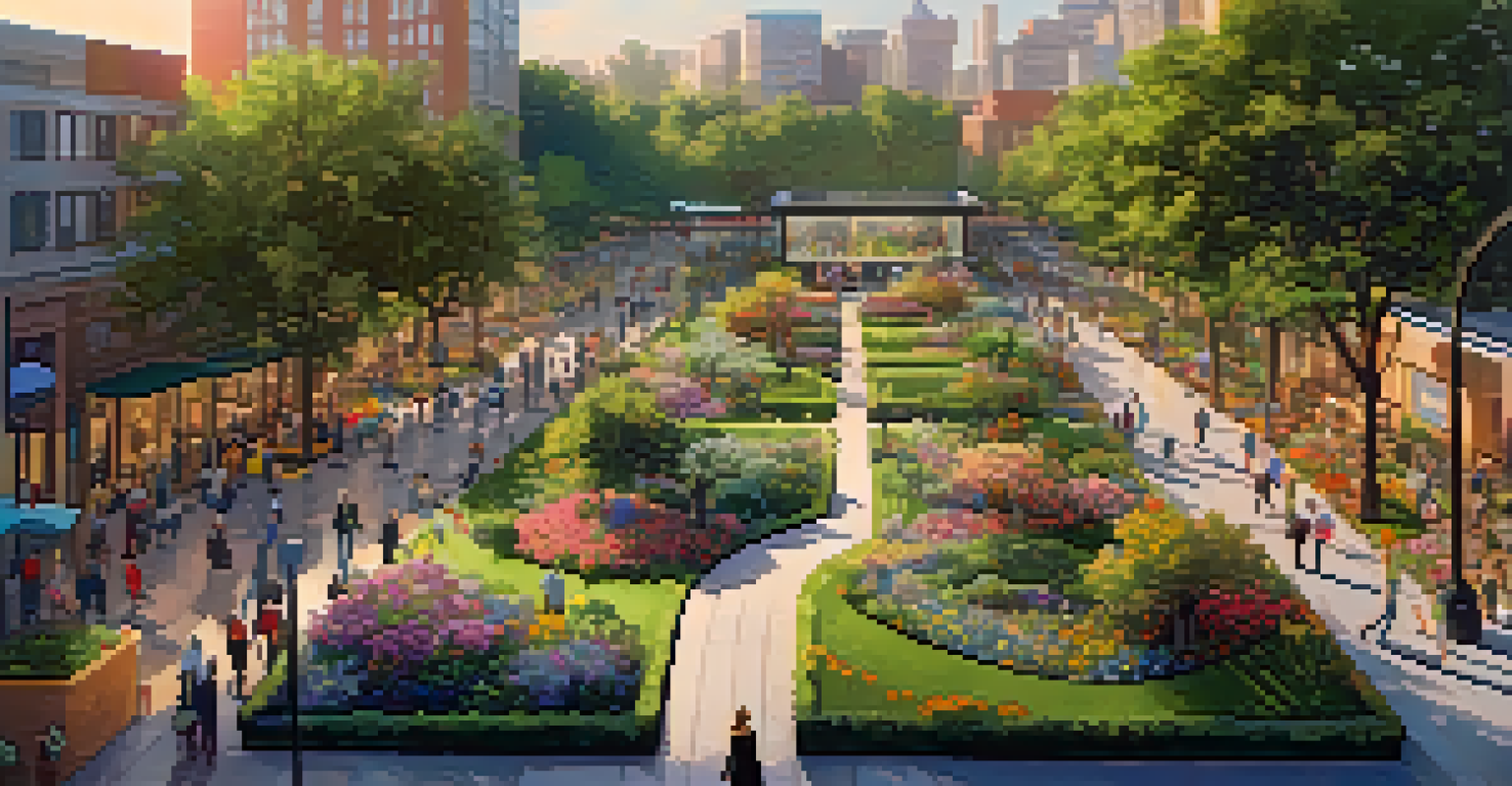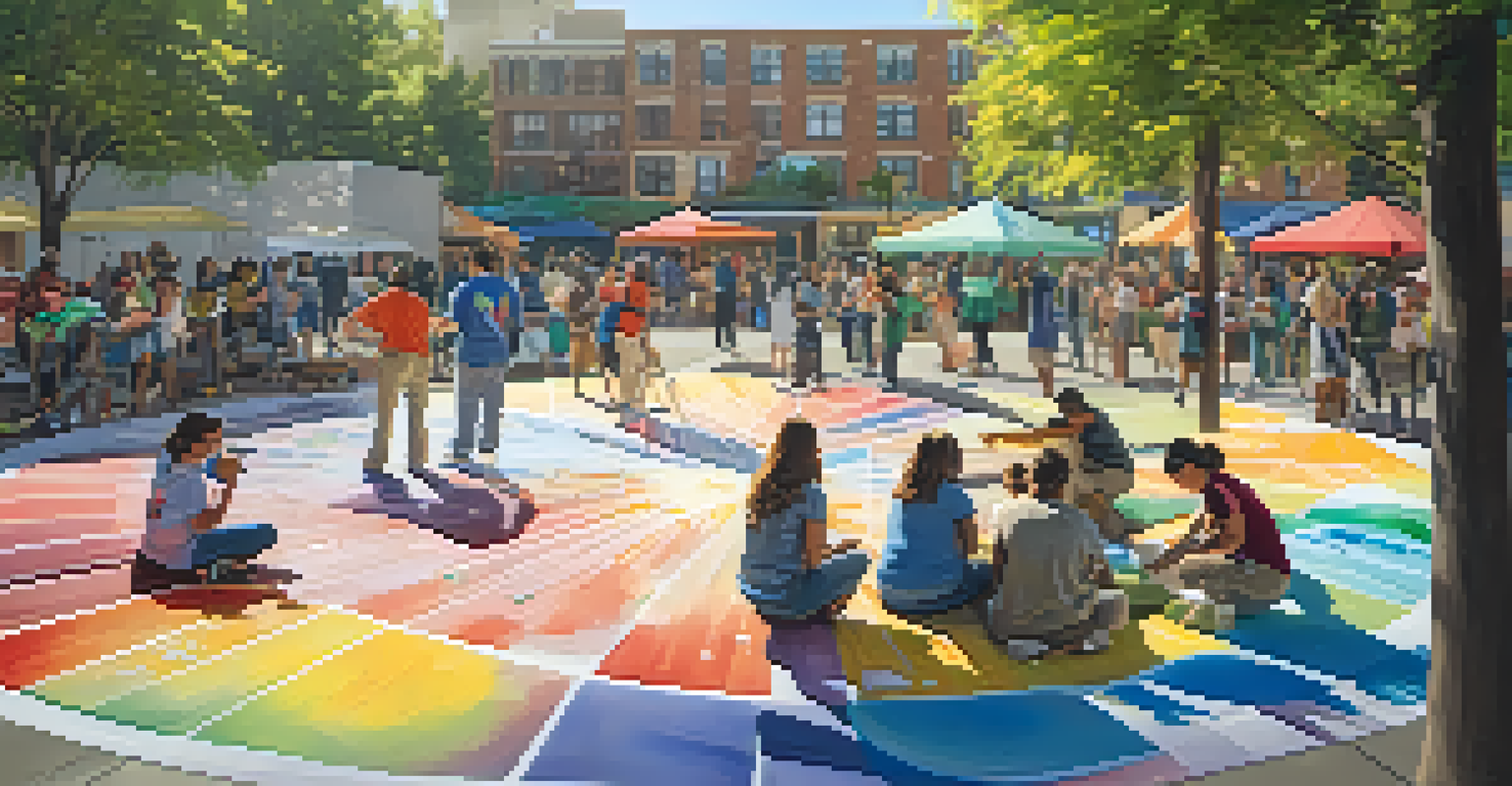The Role of Art in Urban Renewal and Community Revitalization

Art as a Catalyst for Urban Revitalization
Art plays a crucial role in transforming neglected urban areas into vibrant communities. By introducing murals, sculptures, and installations, cities can breathe new life into spaces that have long been overlooked. This creative infusion not only beautifies the environment but also attracts visitors and residents alike, fostering a sense of pride and ownership among the local population.
Art is not what you see, but what you make others see.
One notable example is the transformation of the Wynwood Walls in Miami. Once a rundown neighborhood, it has now become an international destination for street art enthusiasts, showcasing the power of art to reshape perceptions and drive economic growth. Such initiatives demonstrate that art can act as a beacon of hope, encouraging further investment and development in the area.
Moreover, art-driven revitalization often encourages community engagement, as residents participate in the creation and maintenance of public art. This collaborative spirit enhances social bonds and fosters a sense of belonging, proving that when communities come together creatively, the results can be transformative.
Creating Public Spaces Through Artistic Expression
Public art installations redefine communal spaces, making them more inviting and accessible. Parks, plazas, and streets adorned with artistic elements encourage people to gather, interact, and enjoy their surroundings. These spaces become more than just physical locations; they evolve into cultural hubs where community events and gatherings can thrive.

Consider the High Line in New York City, a former elevated railway transformed into a lush urban park featuring diverse art installations along its path. This innovative use of space not only provides a unique walking experience but also fosters community interaction and cultural appreciation. Residents and tourists alike frequent the High Line, demonstrating how art can enhance public spaces.
Art Transforms Urban Spaces
Art revitalizes neglected urban areas, creating vibrant communities that attract residents and visitors.
Furthermore, the presence of art in public areas can lead to increased safety and reduced crime rates. When people gather in well-designed, art-filled spaces, the sense of community grows, and the risk of vandalism decreases. Art has the unique ability to create a positive atmosphere that encourages community stewardship.
Art as a Tool for Social Change
Art has long been a powerful medium for addressing social issues, serving as a voice for marginalized communities. Through various forms of artistic expression, individuals can share their stories and struggles, raising awareness about critical social problems. This can lead to a stronger collective identity and inspire action towards change within communities.
The art of the city is the art of its people.
For instance, the 'Black Lives Matter' murals painted across the nation have sparked conversations about racial injustice and equality, illustrating how art can mobilize communities around social causes. Such artworks become symbols of resilience and hope, igniting passion and inviting discourse.
Additionally, art initiatives that focus on social change often involve community members in the creative process, which empowers individuals and fosters a sense of ownership. By participating in these projects, residents not only contribute to the narrative of their community but also gain valuable skills and confidence.
Economic Benefits of Artistic Initiatives
Investing in art and culture can yield significant economic benefits for urban areas. Creative projects attract tourists, boost local businesses, and create job opportunities, which can revitalize struggling economies. As communities embrace artistic initiatives, they often see a ripple effect that enhances not just the cultural landscape but also the economic vitality of the region.
Take the example of the annual Arts Festival in Edinburgh, which draws millions of visitors each year, significantly contributing to the local economy. This influx not only supports artists but also benefits hotels, restaurants, and shops, illustrating how art can be a powerful economic driver.
Art Enhances Community Identity
Art serves as a vital expression of community identity, fostering pride and connection among residents.
Moreover, art can enhance property values and appeal to new residents and businesses, further stimulating growth. When people see a neighborhood infused with creativity and culture, they are more likely to invest in that area, creating a cycle of revitalization and prosperity.
Fostering Community Identity Through Art
Art can serve as a vital conduit for expressing and celebrating community identity. Murals, sculptures, and performances that reflect the history and culture of a neighborhood allow residents to connect with their roots and share their stories with others. This cultural expression fosters a sense of belonging and pride, creating a more cohesive community.
For instance, the vibrant street art in neighborhoods like Philadelphia showcases the city’s rich history and diverse culture. These works not only beautify the streets but also tell the stories of the people who live there, reinforcing a shared identity among residents.
Additionally, art initiatives that celebrate local heritage can help educate newcomers about the community’s values and traditions. This cultural exchange enriches the community fabric and strengthens ties among residents, making it an essential element of urban renewal.
Art in Urban Planning and Design
Incorporating art into urban planning is becoming increasingly vital for creating spaces that resonate with community needs and aspirations. Thoughtfully designed public spaces that feature art can enhance the livability of a city, encouraging social interaction and providing areas for relaxation and recreation. Urban planners are recognizing the importance of integrating artistic elements into their designs for more vibrant and functional environments.
For example, cities like Barcelona have successfully integrated art into their urban infrastructure through iconic structures and public installations. These creative elements not only make the city visually appealing but also create a unique identity that attracts tourists and fosters local pride.
Economic Growth Through Art
Investing in art initiatives can drive economic benefits by attracting tourism and boosting local businesses.
Moreover, engaging artists in the planning process can lead to innovative solutions that address specific community challenges. By collaborating with local creatives, urban planners can ensure that the resulting spaces reflect the values and desires of the community, making art an integral part of sustainable urban development.
Challenges and Considerations in Art Initiatives
While art can be a powerful tool for urban renewal, it’s essential to acknowledge the challenges that can arise. Issues such as funding, community buy-in, and potential gentrification must be addressed to ensure that art initiatives truly benefit the community. Without careful planning and consideration, good intentions can sometimes lead to negative consequences.
For instance, when art projects lead to increased property values, long-time residents may find themselves priced out of their neighborhoods. It’s crucial for community leaders to strike a balance between fostering artistic expression and preserving the cultural fabric of the area.

Engaging community members in the decision-making process can help mitigate these challenges. By ensuring that local voices are heard and valued, art initiatives can create inclusive environments that reflect the needs and aspirations of all residents, ultimately enhancing the community’s resilience.